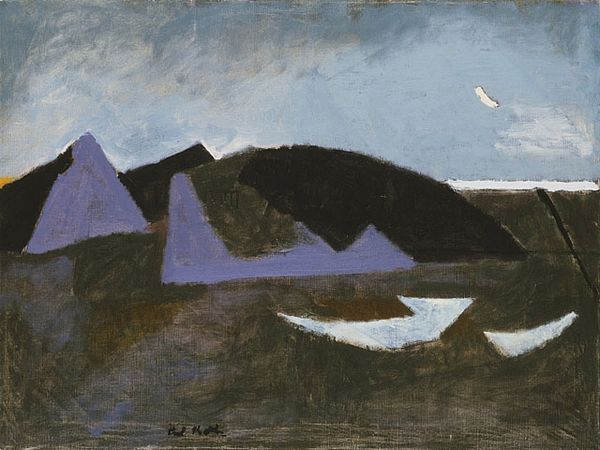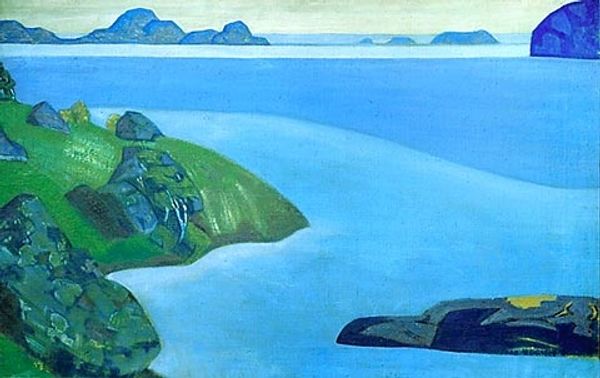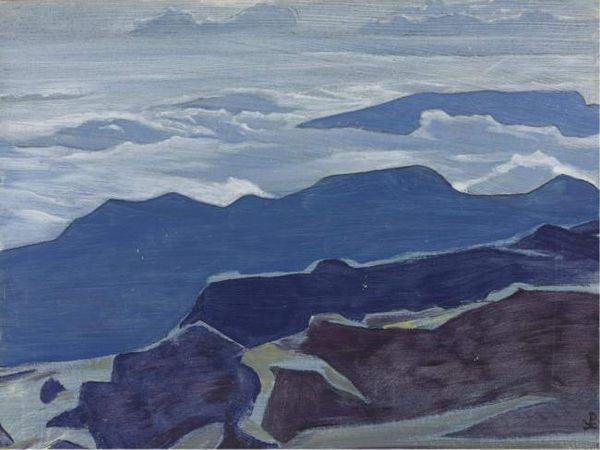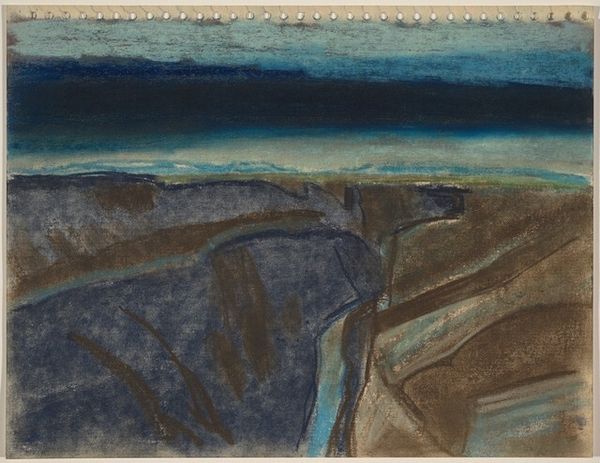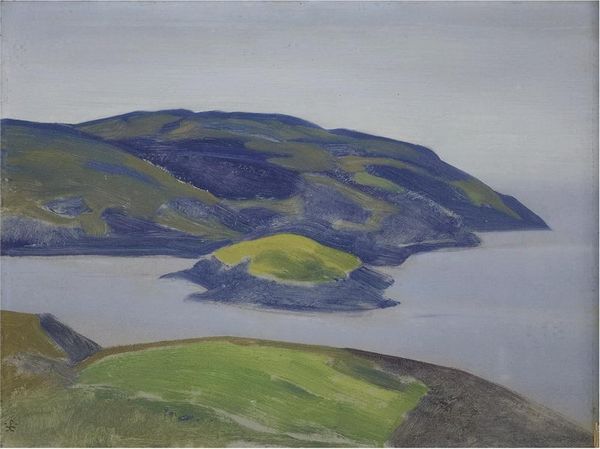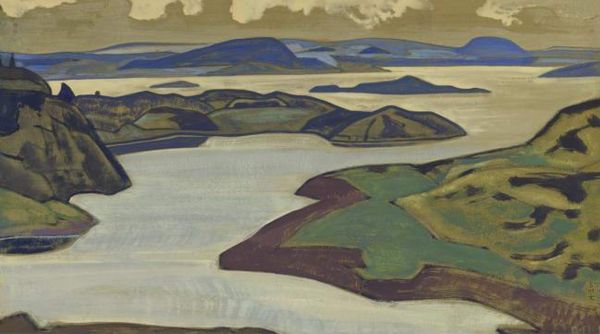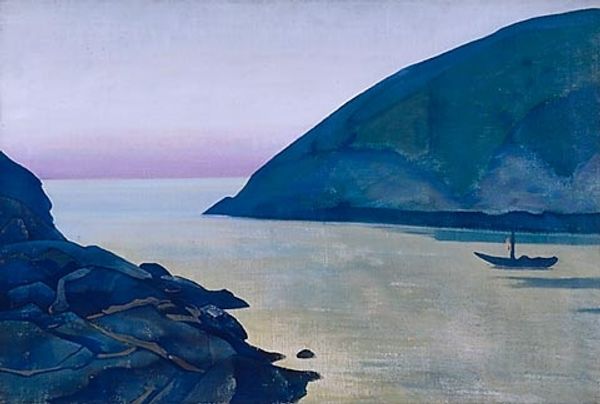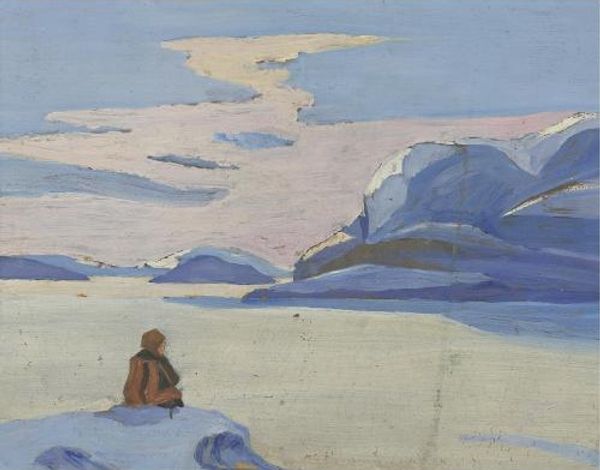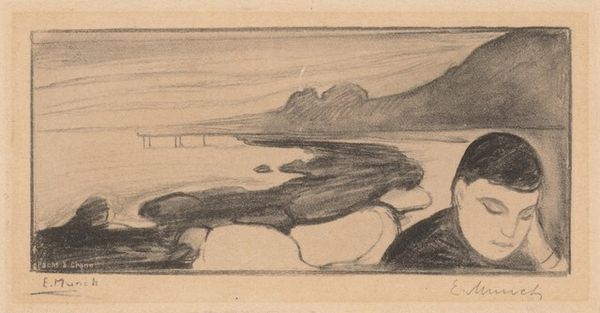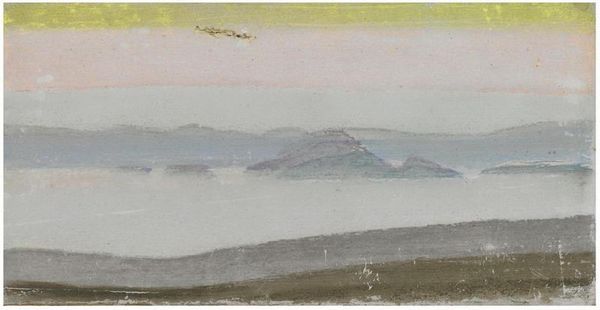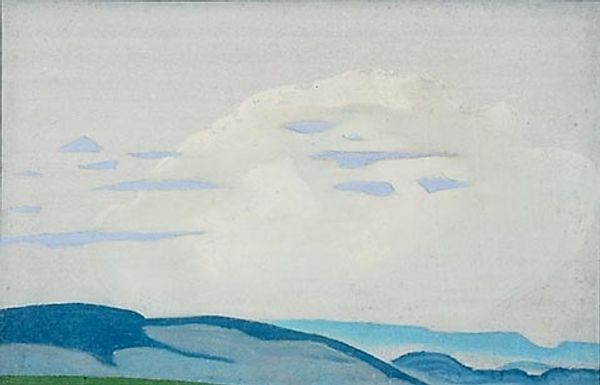
Copyright: Public domain
Curator: Welcome. Before us hangs Nicholas Roerich's "Rocky Seashore," a gouache piece created in 1916. Roerich, as we know, had a profound connection to landscape, and it is worthwhile thinking about what lies beneath the surface. Editor: My first impression is one of stillness, a quiet, almost melancholic scene. The cool tones—the blues and greens—create a very calming but perhaps somewhat somber mood. It’s incredibly muted. Curator: Yes, the color palette is very restrained, isn't it? Roerich was painting this during the turbulent years of World War I. The artistic circles he belonged to grappled with disillusionment toward society and the perceived rise of destructive forces, which led them to search for spiritual solutions, ancient wisdom, and deeper values, often beyond contemporary culture and civilization. The landscape as an eternal and unchanging constant was of course an ideal vehicle. Editor: That makes sense. You can almost feel the weight of that historical moment in the painting. I also can't help but think about accessibility. The composition is straightforward. Was this meant for everyone to experience or only for the elite who understood such esoteric references? Curator: Roerich did aim for accessibility. He was a committed public figure, establishing educational institutions and advocating the power of culture as a civilizing force. This painting participates in this goal by referencing Russia's far North and his dream for a unified culture extending through it to the Orient, for him the seat of cultural value and inspiration. Editor: I see that. This brings up something crucial about cultural exchange, how landscape can simultaneously be a site of aesthetic appreciation and ideological assertion. Where is this seashore? For whom does it carry significance, and how can those meanings get transferred, perhaps distorted? Curator: Roerich does invite a kind of universalizing gaze, which could erase the specific histories and voices tied to the place. But perhaps the almost abstract presentation of this shoreline allows for the viewer to imbue it with the historical meaning it deserves. Editor: It's a beautiful image, one that demands a more involved engagement. I will hold space for that! Curator: I appreciate you prompting that call to responsible action and contemplation. It goes to show how even seemingly straightforward landscapes can echo and shape global realities.
Comments
No comments
Be the first to comment and join the conversation on the ultimate creative platform.
